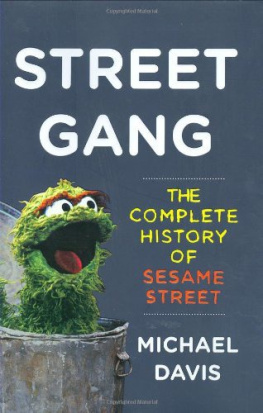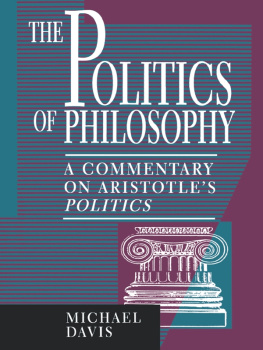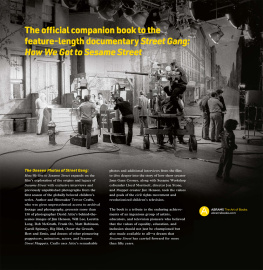VIKING
Published by the Penguin Group
Penguin Group (USA) Inc., 375 Hudson Street, New York, New York 10014, U.S.A. Penguin
Group (Canada), 90 Eglinton Avenue East, Suite 700, Toronto, Ontario, Canada M4P 2Y3 (a division
of Pearson Penguin Canada Inc.) Penguin Books Ltd, 80 Strand, London WC2R 0RL,
England Penguin Ireland, 25 St. Stephens Green, Dublin 2, Ireland (a division of Penguin Books
Ltd) Penguin Books Australia Ltd, 250 Camberwell Road, Camberwell, Victoria 3124, Australia
(a division of Pearson Australia Group Pty Ltd) Penguin Books India Pvt Ltd, 11 Community
Centre, Panchsheel Park, New Delhi-110 017, India Penguin Group (NZ), 67 Apollo Drive,
Rosedale, North Shore 0632, New Zealand (a division of Pearson New Zealand Ltd) Penguin
Books (South Africa) (Pty) Ltd, 24 Sturdee Avenue, Rosebank, Johannesburg 2196, South Africa
Penguin Books Ltd, Registered Offices: 80 Strand, London WC2R 0RL, England
First published in 2008 by Viking Penguin, a member of Penguin Group (USA) Inc.
Copyright Michael Davis, 2008
All rights reserved
Grateful acknowledgment is made for permission to reprint excerpts from the following copyrighted works:
One of These Things from Sesame Street. Words by Bruce Hart and Joe Raposo, music by Joe Raposo. Copyright 1970 Instructional Childrens Music, Inc. Copyright renewed. Rights in the U.S.A. administered by Stage Harbor Publishing, Inc. Rights outside the U.S.A. administered by Instructional Childrens Music, Inc. International copyright secured. All rights reserved.
Somebody Come and Play, words and music by Joe Raposo. Copyright 1970 Jonico Music, Inc. Copyright renewed. Rights in the U.S.A. administered by Green Fox Music, Inc. Rights outside the U.S.A. administered by Jonico Music, Inc. International copyright secured. All rights reserved.
Illustration credits appear on page 380.
LIBRARY OF CONGRESS CATALOGING IN PUBLICATION DATA
Davis, Michael, date.
Street gang: the complete history of Sesame Street/by Michael Davis.
p. cm.
Includes bibliographical references and index.
eISBN : 978-1-440-65875-4
Without limiting the rights under copyright reserved above, no part of this publication may be reproduced, stored in or introduced into a retrieval system, or transmitted, in any form or by any means (electronic, mechanical, photocopying, recording or otherwise), without the prior written permission of both the copyright owner and the above publisher of this book.
The scanning, uploading, and distribution of this book via the Internet or via any other means without the permission of the publisher is illegal and punishable by law. Please purchase only authorized electronic editions and do not participate in or encourage electronic piracy of copyright-able materials. Your support of the authors rights is appreciated.
http://us.penguingroup.com
Prologue
J oan Ganz Cooney walked toward the corner of Amsterdam Avenue and 112th Street, lost in a fog of grief. Ahead were the crenelated parapets that crown the Cathedral of St. John the Divine, a Gothic Revival glory on Manhattans Upper West Side. Black limousines lined the curb-side, clogging the street, as NYPD officers waved their arms in a futile effort to get vehicles moving. The sidewalks were overrun by pedestrians, hundreds of them, all moving toward the cathedral steps. Cooney walked alongside mothers with toddlers clutching Ernie dolls, students playing hooky from school, executives in crisp suits, Midtown secretaries in heels, Latinas in scoop-necked tops, and bohemian types sporting jeans, running shoes, and long ponytails.
It was May 21, 1990, five days after Jim Henson, her friend and creative partner since 1969, had died at fifty-three from a runaway strep infection gone stubbornly, foolishly untreated. There was no other word to describe his passing other than shocking, and it was played just that way in the papers and on the nightly news. People who didnt know him wept as if a favorite uncle had died, that subversive adult who sat with the adults at Thanksgiving but would have preferred dinner at the kids table. They came out in force for the public memorial, filling the vast, vaulted sanctuary, even more than the organizers of the event had anticipated. Some five thousand attendees filled the pews, standing in the antechambers and spilling into the aisles. The overflow was so great that people had simply dropped their backpacks, folded up their strollers, and sat on the hard stone floor.
Clustered row upon row near them were mourners bound by their years together working for and with the Childrens Television Workshop (CTW), the nonprofit corporation Cooney helped build. Cooney took a seat next to Christopher Cerf, one of the founding fathers of Sesame Street.
From the altar, the congregation was an impressionistic canvas, dappled with a profusion of spring green. That was to be expected. Just as teams, tribes, and nations have representative colors, Jim Henson owned Kermit green.
Cooneys thoughts wandered to Kermit and the early days of Sesame Street . Reminders of that time were everywhere. Sitting nearby was Frank Oz, who in 1969 Sesame s debut yearbecame a Henson protg, having joined the Muppets right out of high school. For more than twenty years, Oz had been uptight Bert to Hensons mischievous Ernie, the straight man of the odd-couple comedy duo. On The Muppet Show , their roles had reversed; Oz was outrageously pushy Miss Piggy to Hensons pushed-to-the-brink Kermit.
At no time had Jim Hensons disparate worlds collided quite as markedly as at this memorial. Over to one side was Hensons friend Harry Belafonte. A humanitarian and artist, Belafonte had appeared on The Muppet Show , where he introduced Turn the World Around, a joyous, syncopated African folk melody that would be part of the days program.
Not far away was Lorne Michaels, who gave the Muppets a weekly showcase during the audacious first season (1975) of Saturday Night Live at a time when the ambitious Henson feared he might be trapped for eternity in childrens television. Hensons talent manager, Bernie Brillstein, saw to it that that never happened. Brillstein, who signed John Belushi, Dan Ackroyd, and Gilda Radner, was like a second father to Henson, a Jewish one.
In the late 1980s, Henson had separated from his wife, Jane, the mother of his five children. For most of his career, he had been more married to his work than to Jane, and a relationship that began when they met as students at the College Park campus of the University of Maryland withered. Henson was known to work around the clock in the studio when a production deadline loomed, and his travel schedule and list of business commitments would have seemed unreasonable to most. He seemed happier and more fulfilled away from home, but he craved time with his two sons and three daughters.
As a single man, Henson had had his pick of staggeringly beautiful companions. Daryl Hannah, who had flown in from California for the service on a private jet and now wept softly in a pew, had been one of them. Henson went through a Hollywood stage in his late forties and early fifties, shedding his signature bohemian wardrobe for goods from Rodeo Drive. His beard was neatly trimmed and his hair styled for an appearance hed made with Kermit on the late-night Arsenio Hall Show , just twelve days before he died. Complaining of a sore throat in the greenroom that night, he was uncharacteristically flat and slow on the uptake during an interview segment. Henson used the occasion to plug an upcoming special shot at Disney World in Orlando and to introduce Clifford, a new Muppet musician working with Dr. Teeth and the Electric Mayhem, the house band from The Muppet Show . African American puppeteer Kevin Clash gave voice and performance to Clifford, he of the fuchsia dreadlocks, sunglasses, and vocal delivery that was distinctly urban contemporary. Clash was sensational, bantering with the black comic as the audience howled. Henson seemed to enjoy it as much as anyone, and he looked relieved to have Clash carry the load. It was Hensons final televised interview.









